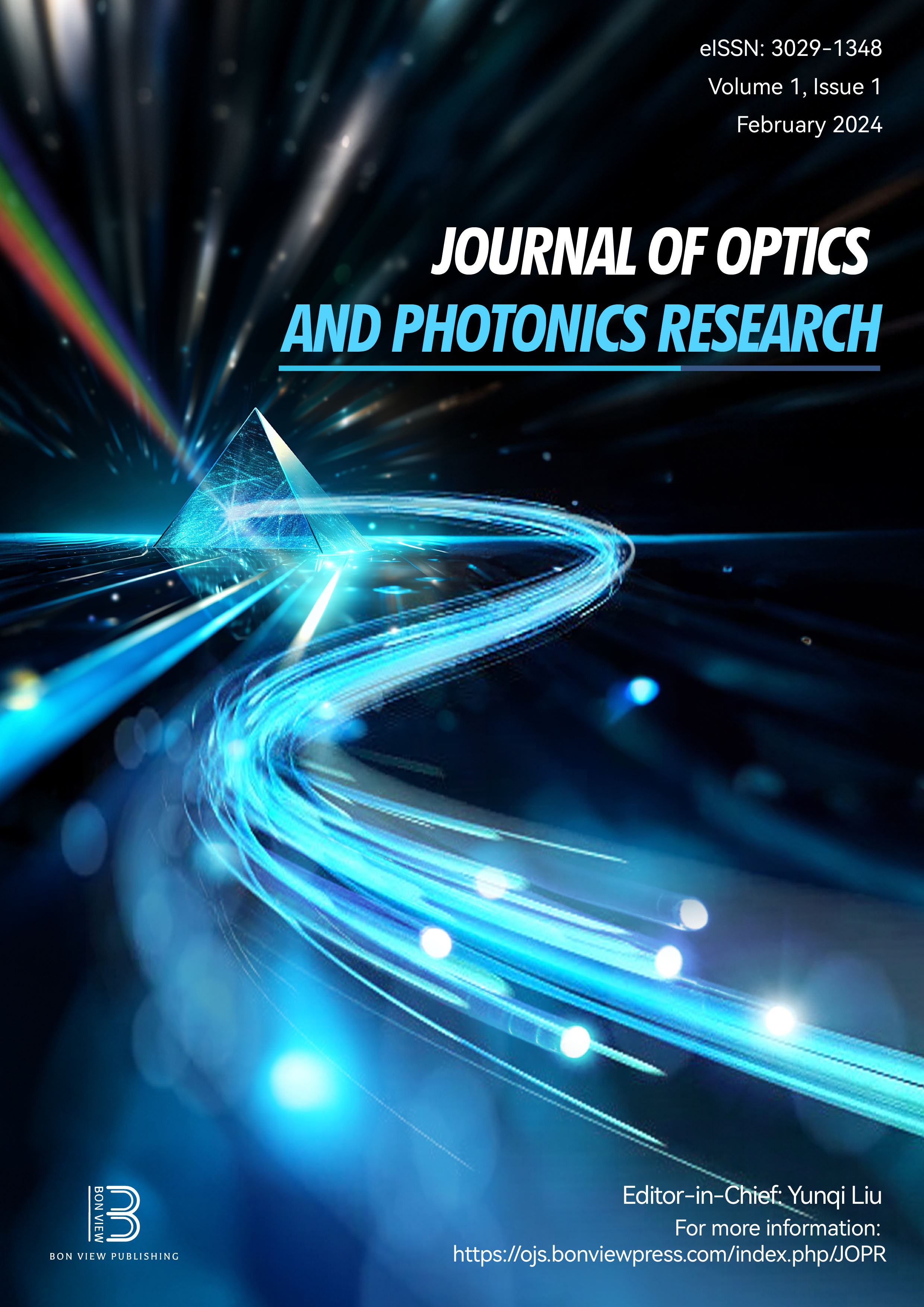Few-Mode Fiber-Based Long-Period Fiber Gratings: A Review
DOI:
https://doi.org/10.47852/bonviewJOPR42022414Keywords:
few-mode fiber, long-period fiber grating, helical long-period grating, mode converter, mode division multiplexing, orbital angular momentum, optical fiber sensingAbstract
Long-period fiber gratings (LPFGs) are efficient ways to achieve high-order core mode conversion and vortex mode conversion in few-mode fibers (FMFs), which have the benefits of flexible structure, high integration, low insertion loss, and strong wavelength selectivity. With the rapid development of mode division multiplexing (MDM) optical communications, the FMF-LPFGs could have promising applications in the field of MDM optical communications and optical sensors. In this paper, we briefly introduce the principle of optical coupling, theoretical analysis, fabrication techniques, and applications of the FMF-LPFGs in optical communications and optical sensors. The CO2-laser writing technique and arc discharge technique are widely used for the fabrication of FMF-LPFGs and FMF helical long-period gratings (HLPGs). The hydrogen-oxygen flame technique has the advantage on the fabrication of FMF-HLPGs. The mechanical micro-bending and acoustic induction techniques are flexible and effective methods in fundamental researches. The femtosecond laser technique has the advantages for the fabrication of parallel FMF-LPFGs and micro-structure FMF-LPFGs. The mode converters based on the FMF-LPFGs have been demonstrated using different inscription techniques. The FMF-LPFG converters have the advantages such as temperature insensitivity and wavelength tunability. The broadband converters have been demonstrated based on the phase-shift FMF-LPFG, cascaded FMF-LPFGs, and FMF-LPFG operating at dispersion turning point. The FMF-LPFGs and FMF-HLPGs are an excellent option to generate all-fiber orbital angular momentum (OAM) modes in different specialty FMFs, especially the FMF-HLPGs can excite different-order OAM modes directly. As the novel fiber component, the sensing application of FMF-LPFGs and FMF-HLPGs is also briefly introduced.
Received: 2 January 2024 | Revised: 4 February 2024 | Accepted: 4 February 2024
Conflicts of Interest
Yunqi Liu is the editor-in-chief, and Siyu Chen is a peer review support specialist for Journal of Optics and Photonics Research and was not involved in the editorial review or the decision to publish this article. The authors declare that they have no conflicts of interest to this work.
Data Availability Statement
Data is available on request from the authors.
Downloads
Published
Issue
Section
License
Copyright (c) 2024 Authors

This work is licensed under a Creative Commons Attribution 4.0 International License.
How to Cite
Funding data
-
National Natural Science Foundation of China
Grant numbers 62075124


